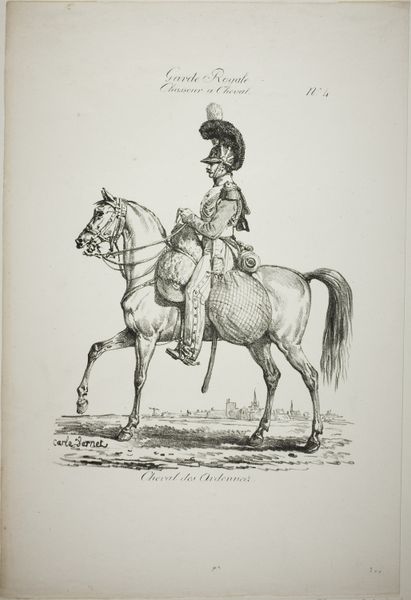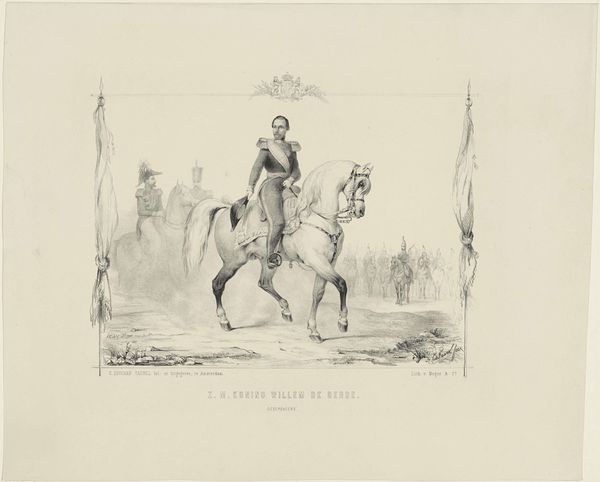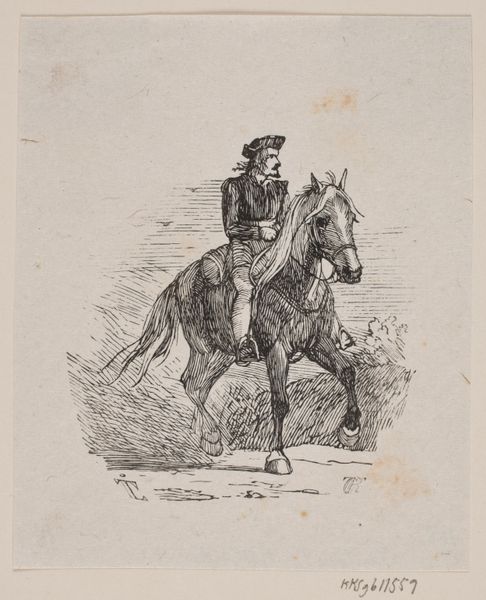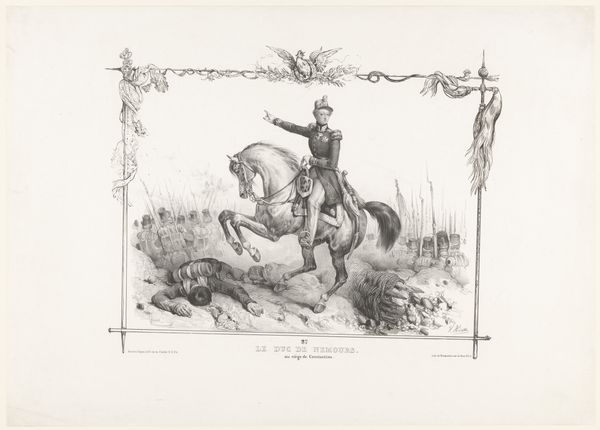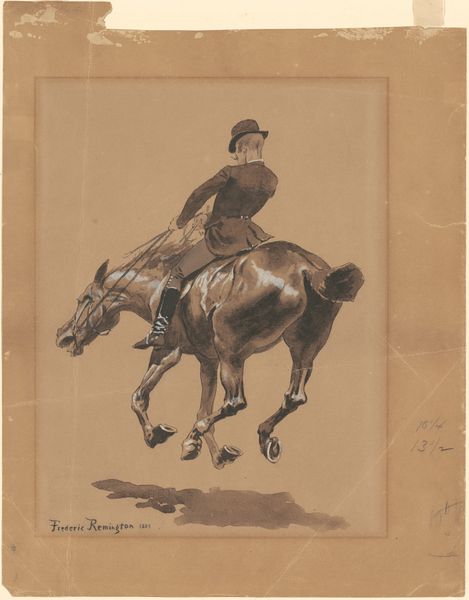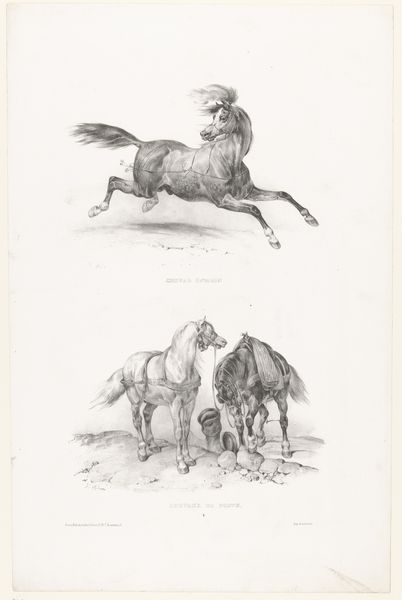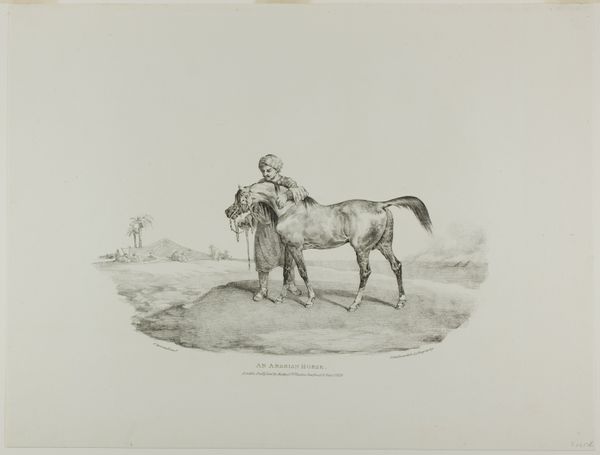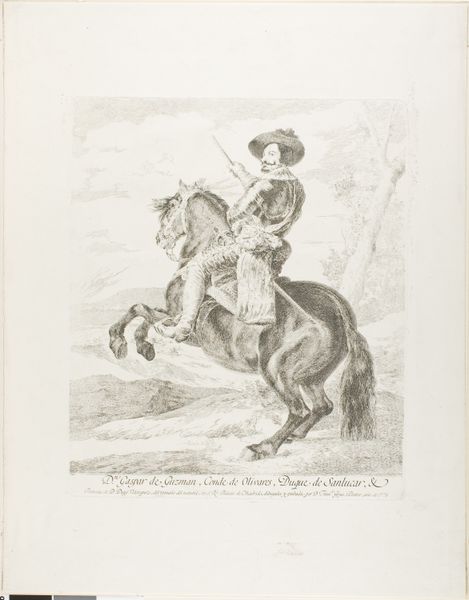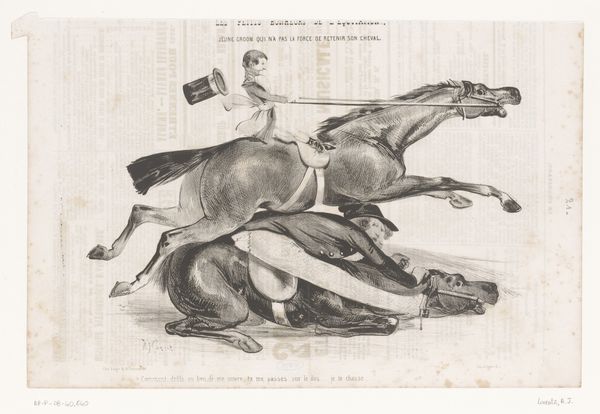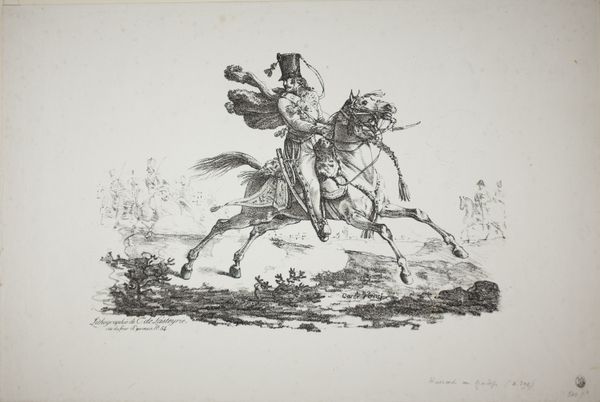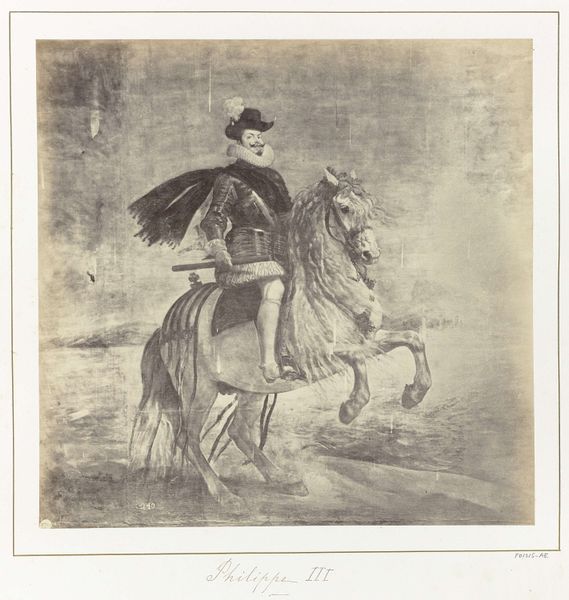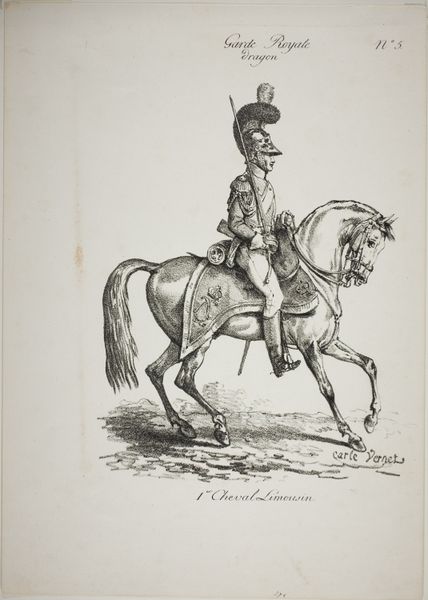
Dimensions: height 215 mm, width 275 mm
Copyright: Rijks Museum: Open Domain
Editor: Here we have "Spotprent op Wilhelm I, koning van Pruisen, 1862," from Johan Michaël Schmidt Crans. It appears to be a print, perhaps an engraving or etching. It looks satirical, a bit crude, and the line work is very active. What strikes you about this piece? Curator: What immediately grabs my attention is how the work embodies the relationship between artistic production and political power. This caricature of Wilhelm I isn't just a representation; it's an active intervention within the 19th-century Prussian social landscape. The artist's choice of printmaking—a medium of reproduction—signals an intention to circulate this critique widely. How does the cheapness of reproducible works change art viewership? Editor: So you’re saying the material and the means of production are just as important as what's depicted? Curator: Precisely. The rapid dissemination of such images allows for the shaping and influencing of public opinion. Note how the inscription and title contribute to a larger system of meaning, guiding interpretation of the monarch's leadership. To understand its cultural impact, what might knowing who funded and distributed this artwork tell us? Editor: It’s interesting to think about the work’s intended audience and how that relates to its material form, not just its content. I see your point that printmaking is about widespread circulation and distribution of cheap art. Curator: Exactly! Reflect on the social implications: who had access to these images? What spaces did they occupy – coffee houses, newspapers? And how does that visibility translate into political pressure and maybe even change? This really moves away from simply viewing art for pleasure to considering its role in the wider cultural machine. Editor: I learned how analyzing a work through its materials and production can offer more about the social landscape that it reflects, particularly if that work has the power of caricature in its images. Curator: Yes, and I appreciate you reminding me that this piece would have first struck viewers through its satirical depiction of power rather than as an example of innovative material production.
Comments
No comments
Be the first to comment and join the conversation on the ultimate creative platform.
